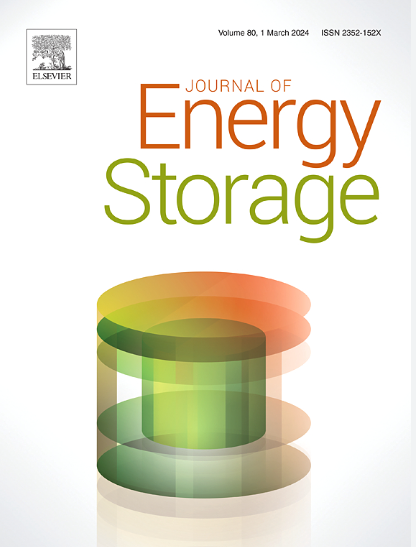进口循环对抽水蓄能低扬程泵系统出口管道能耗的影响及优化
IF 8.9
2区 工程技术
Q1 ENERGY & FUELS
引用次数: 0
摘要
许多大型低水头泵站可以反向运行,利用上游和下游的湖泊和河流进行抽水蓄能。出口管道的水力损失占泵扬程的很大比例,极大地影响了泵系统的效率。为了研究进口循环分布对出口管道水力损失和泵系统整体效率的影响,对等距圆形管道和虹吸出口管道的流态和能量场进行了数值模拟分析。应用动态模态分解(DMD)研究了非旋转流、旋流和二次流条件下圆管内熵产的演化特性。通过分布入口周向速度,定量分析了出口管道的水力特性。此外,还评估了导叶出口角对泵系统内部流动和能量性能的影响。结果表明,适当的旋流可以减少熵的产生,这在实验中得到了证实。当从轮毂到叶冠的导叶出口角为101°-99°时,导叶出口的流动偏转角为4°-7°,可以减少导叶上的流动分离,减少出口管道中不利的流动模式,减少出口水池的旋转动能损失,从而实现较高的泵系统效率。这样,泵系统效率提高了14.57个百分点。研究结果为提高导叶旋转机械系统的效率提供了有价值的见解。本文章由计算机程序翻译,如有差异,请以英文原文为准。
Effect of inlet circulation on energy consumption of outlet conduit of low-head pump system for pumped storage and its optimization
Many large low-head pump stations can operate in reverse and utilize upstream and downstream lakes and rivers for pumped storage. The hydraulic loss in the outlet conduit accounts for a significant proportion of the pump head, greatly affecting the pump system efficiency. To investigate the effect of inlet circulation distribution on the hydraulic loss of the outlet conduit and the overall pump system efficiency, numerical simulations were conducted to analyze the flow patterns and energy fields of an isometric circular pipe and a siphon outlet conduit. Applying dynamic mode decomposition (DMD), the evolutionary properties of entropy production in the circular pipe were examined under non-rotating flow, swirling flow, and secondary flow, respectively. By distributing circumferential velocity at the inlet, the hydraulic characteristics in the outlet conduit were quantified and analyzed. Additionally, the effect of the guide vane outlet angle on the internal flow and energy performance of the pump system was evaluated. The results reveal that a proper swirling flow can reduce entropy production, which was confirmed in the experiment. A high pump system efficiency is achieved when the guide vane outlet angle is 101°-99° from hub to shroud, with the flow deflection angle at the guide vane outlet of 4°-7°, which reduces flow separation on the guide vane, unfavorable flow patterns in the outlet conduit, and rotational kinetic energy losses in the outlet sump. In this way, the pump system efficiency was improved by 14.57 percentage points. The findings provide valuable insights for improving the efficiency of rotating machinery systems with guide vanes.
求助全文
通过发布文献求助,成功后即可免费获取论文全文。
去求助
来源期刊

Journal of energy storage
Energy-Renewable Energy, Sustainability and the Environment
CiteScore
11.80
自引率
24.50%
发文量
2262
审稿时长
69 days
期刊介绍:
Journal of energy storage focusses on all aspects of energy storage, in particular systems integration, electric grid integration, modelling and analysis, novel energy storage technologies, sizing and management strategies, business models for operation of storage systems and energy storage developments worldwide.
 求助内容:
求助内容: 应助结果提醒方式:
应助结果提醒方式:


